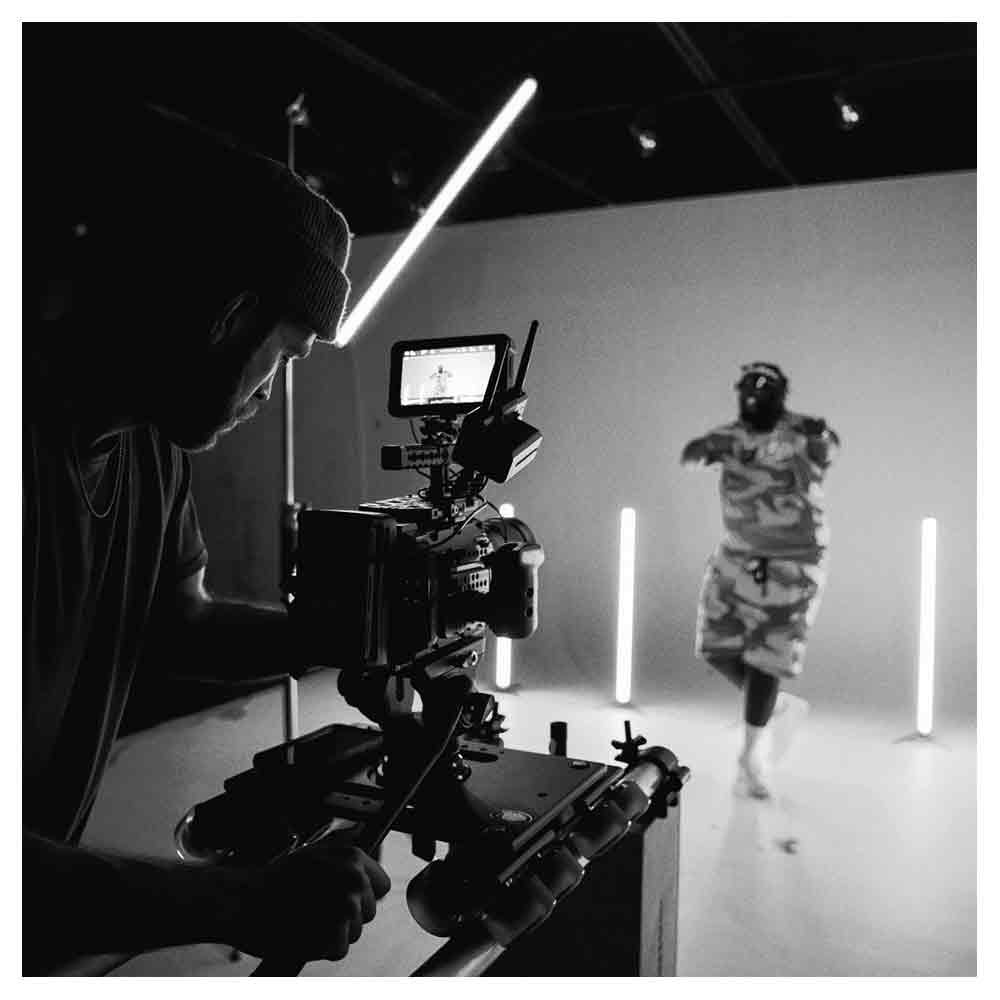The Art and Business of Music Video Production: A Comprehensive Guide
Creating a music video is more than just setting up a camera and pressing the record. It's an intricate process that requires a perfect blend of creativity, technical skills, and a deep understanding of the music industry.
In this article, we'll explore the ins and outs of music video production, cover everything from pre-production to promotion, and provide you with a better understanding of this fascinating world.
Pre-Production: Crafting the Song's Story and Vision
The first step in creating a music video is the pre-production phase. During this stage, the music video producer works closely with the artist to develop the creative direction for the video. This creative direction involves several key steps:
Understanding the song: The producer listens to the audio track and discusses the song's story and themes with the artist. This helps to create a visual representation that complements the music.
Developing the concept: The producer and the artist brainstorm ideas, drawing inspiration from other music videos, films, and visual art. This is where the creative juices flow and the ideas take shape.
Creating a storyboard: Once the concept is in place, the producer establishes a storyboard – a series of sketches that outline the sequence of shots and the visual indicators for each scene. This helps the production team visualize the video and plan the shoot.
Budgeting and scheduling: The producer works with the artist and their team to establish a budget for the project. They also create a shooting schedule, considering location, talent, and equipment availability.
Assembling the production team: The producer hires a director, camera crew, lighting technicians, and other necessary personnel, ensuring they have the skills and experience to execute the creative vision.
Production: Bringing Your Vision to Life
Once the pre-production phase is complete, it's time to start filming the music video. Here are some key aspects of the production process:
Location scouting: The producer and director scout potential shooting locations, taking into account factors such as accessibility, lighting, and the overall aesthetic.
Casting talent: The producer and director work together to cast actors, dancers, or other performers needed for the video. This may include holding auditions or reaching out to friends or industry connections.
Setting up the shoot: The production team sets up the sound equipment, lighting, and camera gear on location. This can be time-consuming, but it's essential for creating the desired visual effects.
Filming: The director works with the camera crew to capture the shots outlined in the storyboard. This may involve shooting multiple takes to capture the best possible footage. The artist performs the song in sync with the audio track, allowing for seamless editing in post-production.
B-roll footage: Besides the main shots, the production team captures B-roll footage – additional clips that can be used to enhance the final video. This may include shots of the location, close-ups of instruments, or behind-the-scenes footage.
Post-Production: Polishing the Visuals and Audio
After the shoot, it's time to edit the footage and create the final music video. This process, known as post-production, involves several steps:
Selecting the best shots: The editor and director review the footage and choose the best takes to include in the final video.
Assembling the video: The editor arranges the selected shots in sync with the audio track, following the storyboard and the director's vision. This often involves experimenting with different cuts and transitions to create a seamless and engaging video.
Color grading and visual effects: The editor enhances the footage by adjusting the color balance, contrast, and saturation, creating a cohesive visual style for the video. They may also add visual effects, such as animations or CGI, to elevate the video's production value.
Audio mixing: The editor and sound engineer balance the audio levels, ensuring the vocals and instruments are clear and well-mixed. They may also add sound effects or audio elements to enhance the video's overall sound.
Review and approval: The producer and artist review the edited video, providing feedback and requesting necessary changes. This process may involve several revisions until the final video meets its expectations.
Exporting and delivery: Once the video is approved, the editor exports it in the appropriate format for distribution, such as YouTube or other streaming platforms.
Promotion: Reaching Your Target Audience
With the music video complete, it's time to promote it to the rest of the world. Here are some strategies to help reach your target audience:
Social media: Share the video on social media platforms, such as Instagram, Twitter, and Facebook. Engage with fans and encourage them to share the video with their networks.
YouTube and streaming platforms: Upload the video to YouTube, Vevo, and other streaming platforms, ensuring that the metadata (title, description, and tags) are optimized for search engines.
Email marketing: Email your mailing list, announcing the video release and encouraging subscribers to watch and share.
Press and media outreach: Reach out to music blogs, magazines, and other media outlets to secure coverage and reviews of your music video.
Collaborations and partnerships: Work with other artists, influencers, or brands to cross-promote the video and expand its reach.
The Business Side of Music Video Production
While the creative aspects of music video production are undoubtedly exciting, it's also essential to understand most music videos' business side. Here are some considerations for artists and producers alike:
Budgeting: Establish a clear budget for the project, taking into account costs such as equipment rental, talent fees, location permits, and post-production services.
Contracts and agreements: Ensure that all parties involved, including the artist, production team, and talent, sign contracts outlining the terms of the project, payment, and rights to the footage.
Insurance and permits: Secure the necessary insurance coverage and permits for the shoot, mainly if you're filming in public spaces or using specialized equipment.
Revenue streams: Consider potential revenue streams for the video, such as YouTube ad revenue, sponsored content, or licensing deals.
Becoming a Music Video Producer
Becoming a music video producer might be your perfect career if you're passionate about music and filmmaking. Here are some steps to help you break into the industry:
Develop your skills: Gain experience in filmmaking, editing, and audio production by working on personal projects, student films or assisting on professional shoots.
Network and build connections: Attend industry events, workshops, and conferences to meet other professionals in the music and film industries. Building relationships with artists, directors, and production teams can lead to potential job opportunities or collaborations.
Create a portfolio: Showcase your skills and previous projects by creating a portfolio or showreel. This includes music videos you've worked on, behind-the-scenes footage, or other creative projects demonstrating your talents.
Seek out opportunities: Actively search for freelance or entry-level positions in music video production, such as production assistant, camera operator, or editor. Experience in various roles can help you develop a well-rounded skill set and better understand the production process.
Promote yourself: Develop a professional website and social media presence to showcase your work and connect with potential clients. Regularly update your portfolio, share behind-the-scenes content, and engage with your audience to build your brand and reputation.
Stay current with industry trends: Keep up to date with the latest trends in music video production, technology, and the music industry. This can help you stay ahead of the curve and adapt your skills to the ever-evolving landscape.
Collaborate with emerging artists: Partner with up-and-coming artists to create music videos, offering your services at a discounted rate or on a project-by-project basis. This can help you gain experience, build your portfolio, and establish connections within the music industry.
By following these steps, you can pave your way to a successful career in music video production. With passion, hard work, and a little luck, you might create the next viral music video sensation.
Frequently Asked Questions About Music Video Production (FAQs)
How much does it cost to produce a music video?
The cost of producing a music video depends on many factors, such as the complexity of the concept, the equipment and talent required, and the duration of the shoot.
A low-budget music video could cost a few hundred dollars, while a high-end production could cost tens of thousands or even more. Establishing a clear budget before starting the project is essential as allocating funds accordingly.
How long does it take to produce a music video?
The timeline for producing a music video depends on the project's scope, the production team's availability, and the post-production process.
A simple video might take a few days or weeks from pre-production to the final edit, while a more complex production could take months. Keep in mind that revisions and feedback may also affect the timeline.
Do I need a professional music video producer?
While it's possible to produce a music video independently, hiring a professional music video producer can significantly enhance the quality and impact of your video.
An experienced producer can help you develop a creative concept, manage the budget and schedule, and ensure the final product meets your vision and expectations.
What is the role of a music video director?
The music video director is responsible for executing the creative vision of the video. They work closely with the artist and producer during pre-production to develop the concept and storyboard.
They also oversee and support the production team during the shoot to ensure that the footage captured aligns with the vision.
The director also collaborates with the editor during post-production to create the final video.
How can I promote my music video?
You can use social media platforms, YouTube and other streaming services, email marketing, press, media outreach, and collaborations or partnerships with other artists or influencers to promote your music video.
The key is to create a promotional strategy tailored to your target audience and leverage multiple channels to maximize exposure.
What are some tips for producing a music video on a tight budget?
If you're working with clients on a limited budget, consider the following tips to make the most of your resources:
Simplify your concept and focus on a solid visual or narrative hook.
Utilize available locations and resources, such as friends' homes, local parks, or community spaces.
Collaborate with other artists or creatives willing to work for reduced rates or on a barter basis.
Use affordable or rented equipment and software for filming and editing.
Leverage your network and social media to promote your video rather than invest in paid advertising.
Remember that creativity and resourcefulness can go a long way in producing an engaging music video, even with a limited budget.
What are some common mistakes to avoid in music video production?
To ensure the success of your music video, it's essential to avoid some common pitfalls that can affect the quality and impact of the visuals for your project:
Insufficient planning: Skipping or rushing through the pre-production phase can lead to unexpected issues during the shoot, such as location or equipment problems. Allocate enough time for thorough planning, and make sure all aspects of the project are well-organized.
Lack of clear communication: Miscommunication between the artist, producer, director, and crew can lead to clarity and consistency in the final video. Establish clear lines of communication and keep everyone informed throughout the process.
Overcomplicating the concept: While ambitious ideas can be exciting, attempting to cram too many elements into a music video can result in a clearer and more cohesive final product. Focus on a strong central concept and ensure all visual elements enhance the song's message and appeal.
Ignoring the target audience: Creating a music video that resonates with your intended audience is crucial. Keep their preferences and expectations in mind when developing the concept and visuals, and make sure your promotional strategy is tailored to reach them effectively.
Neglecting the importance of post-production: Cutting corners during the editing and post-production phase can result in a subpar video that fails to do justice to your creative vision. Allocate sufficient time and resources to the editing process, and be prepared to invest in revisions and fine-tuning to achieve the best possible result.
By being mindful of these potential pitfalls, you can improve the quality and impact of your music video and maximize its chances of success.
How do I find a music video producer or director?
To find a music video producer or director, you can:
Browse online portfolios, directories, or social media platforms to discover professionals with relevant experience and a style that aligns with your vision.
Attend industry events, workshops, or networking functions to connect with other professionals and build relationships.
Reach out to your personal network or industry contacts for recommendations or referrals.
Post a job listing on industry websites or job boards to attract interested candidates.
When selecting a producer or director, review their previous work, discuss their creative approach and vision, and ensure they have the skills and experience to bring your own idea or project to life.
How can I measure the success of my music videos?
The success of a music video can be measured through a combination of quantitative and qualitative metrics, including:
View counts and streaming numbers: Track the number of views or streams on platforms like YouTube, Vevo, and other streaming services.
Social media engagement: Monitor the number of likes, shares, and comments your video receives on platforms like Instagram, Twitter, and Facebook.
Press and media coverage: Track the number of reviews, interviews, and features your video secures in music blogs, magazines, and other media outlets.
Audience feedback: Gauge audience reactions and feedback through comments, direct messages, and live performances.
Impact on music sales or streaming: Analyze the effect of the video's release on the sales or streaming numbers of the associated song or album.
By monitoring these metrics, you can assess your promotional strategy's effectiveness, identify improvement areas, and plan future projects more strategically.



























